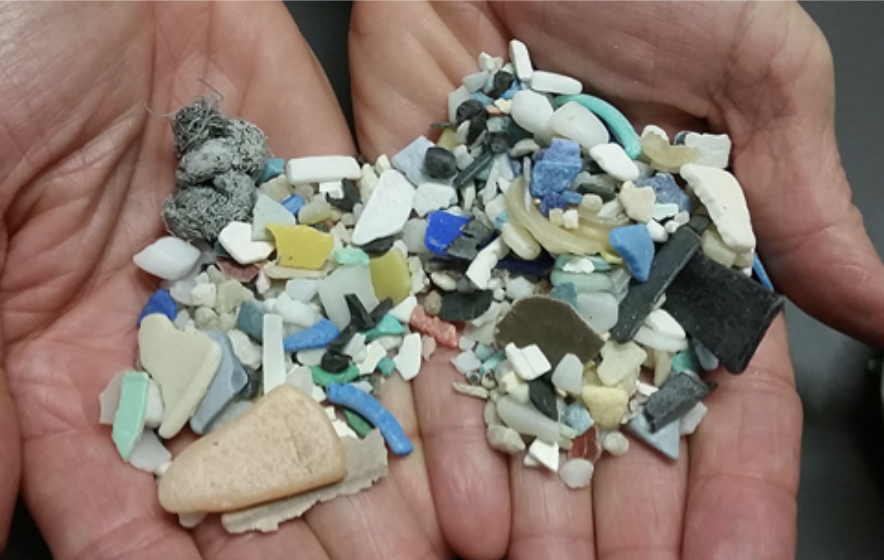Stanford researchers emphasized the dangerous reach of plastic pollution across the globe, in response to a recent Netherlands study that detected microplastics — miniscule plastic bits — in human blood.
At the size of a pencil eraser or smaller, microplastics are now found everywhere on the planet, from Antarctica to drinking water to human placenta and, just recently, to human blood. The Dutch study detected microplastics in the blood samples of 17 out of 22 volunteers — almost 80%.
“Plastics started showing up in marine animals in the 1960s, and since then, we have discovered microplastics in over 1000 species [as found in] millions and millions of specimens,” Hopkins Marine Station postdoctoral scholar Matt Savoca said.
The generation of these tiny particles can be siloed into two types: primary and secondary. Primary microplastics result from factors like waste left from usage of cosmetics containing microbeads or washing clothes that were created from recycled plastic fabrics. Secondary microplastics involve gradual degradation of larger plastic pieces in the environment.
Microplastic hotspots are prevalent in the Pacific Gyres, resulting in the infamous Great Pacific Garbage Patch, and along coastal areas in proximity to highly populated cities, according to Savoca.
In the ocean, the “mechanical pounding of wave action” and UV light contribute to the degradation of plastics like “abandoned fishing gear, broken-up buoys and nets,” said Jeffrey Koseff, Ph.D. ’83, engineering professor and Senior Fellow at the Woods Institute for the Environment. Due to their wide range of sizes, some microplastics can be “mobilized into the atmosphere” and breathed into the lungs, Koseff said.
Even smaller than microplastics are nanoplastics at less than 100 microns — “about the width of a human hair,” Savoca said.
Nanoplastics are particularly worrisome because research has implicated that “plastics less than 20 micrometers in size can penetrate organs,” said Michele Barry, professor of medicine and Director of Stanford’s Center for Innovation in Global Health. Pieces less than 10 micrometers can also cross cell membranes and the blood-brain barrier, Barry said.
The concept of plastics being inherently detrimental, however, is a misconception. Plastics have become “a scapegoat,” Savoca said, and are inert by themselves because they are composed of hydrocarbon chains. The inclusion of additives to make plastics more environmentally resilient are the ingredients that could be a recipe for a human health disaster. For example, plasticizers boost durability but are “endocrine-disrupting.”
Historically, microplastics have been “linked with a wide variety of health impacts — ranging from immune and endocrine disruptions to cancer risks to potentially negative pregnancy outcomes,” Barry said.
Taking preemptive actions to effectively design microplastic dispersal is a possible solution in our current plastic-reliant society. Fluid dynamics, the study of liquid and gas flow, holds potential for revolutionizing the structure of plastics.
Microplastic fragments are unique in that they are not spherical but instead have irregular “shard” shapes, Koseff said. According to Koseff, if certain shapes can lead to broken plastic pieces aggregating in the ocean instead of dispersing, clean-up could become much more tractable.
Another option would be to develop alternative, biodegradable plastics and completely eliminate conventional plastic production — but according to Barry, there is a lack of financial incentive to invest in such research.
“The fact that it’s still cheaper to produce virgin plastics than use recycled materials disincentivizes companies from shifting their focus away from additional extraction and production,” Barry said.
Although further globalized studies will be needed to verify the results of the Dutch study, more scientists are taking notice.
“In some senses, it’s a wake-up call,” Koseff said.
